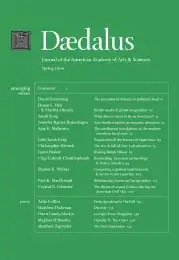Looking out, looking in: competing organizational interests & the proliferation of Soviet WMD expertise
The collapse of the Soviet Union in the early 1990s raised concerns about the security of its nuclear weapons.1 In response, the United States joined forces with countries of the former Soviet Union, especially Russia, as well as the European Union and other states, to create a series of programs aimed at securing former Soviet weapons of mass destruction (WMD), weapons-relevant materials, and scientific expertise. Of these efforts, the most troubled has been the one aimed at containing WMD skills and knowledge. Former Soviet weapons experts haven’t sold their knowledge around the world; indeed, there have been almost no documented cases of such proliferation (although concerns remain about what goes unreported). Rather, it is the means chosen for fighting such proliferation–working with and reemploying WMD experts –that have proven problematic.
Cooperation with former cold war enemies certainly created a host of difficulties, as did the secrecy that surrounds nuclear, biological, and chemical weapons efforts. But there’s a significant barrier to success found much closer to home. The U.S. bureaucracies tasked with implementing programs focused on the proliferation of WMD expertise came up against a problem common to all organizations: the need to pursue and protect their own interests.
The notion that organizations have their own interests is well-established, although too often national security issues are assumed to be so important they trump this self-interested behavior. Organizations, the literature claims, seek to manage the environments in which they act. In particular, organizations that have to please similar authorities and that face comparable constraints exhibit isomorphic behavior. That is, they often respond to external pressure by aligning their interests with the interests of powerful external forces. This, in turn, means that organizations that face similar environments come to resemble one another, either through coordinated duplication or mimicry. But organizations also need to fit in at home. When organizations are given new tasks, these tasks come to be defined and implemented in ways that accommodate and reinforce the interests of the parent organization.
U.S. nonproliferation programs tried both to accommodate their external environments and to match their goals with the goals of their parent organizations. The two largest programs, one in the State Department and another in the Department of Energy, adopted similar narratives about how their activities furthered nonproliferation. Each program, however, also adopted an implementation strategy that was heavily influenced by its parent organization. What resulted were two programs that accommodated their internal and external environments but were unable to achieve their original nonproliferation goals.
. . .
